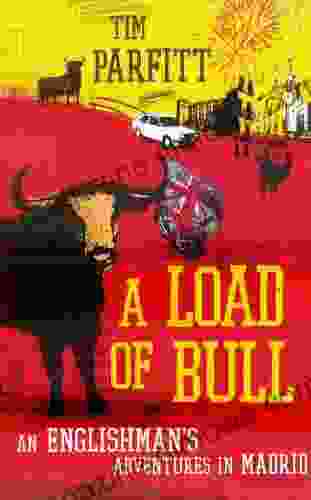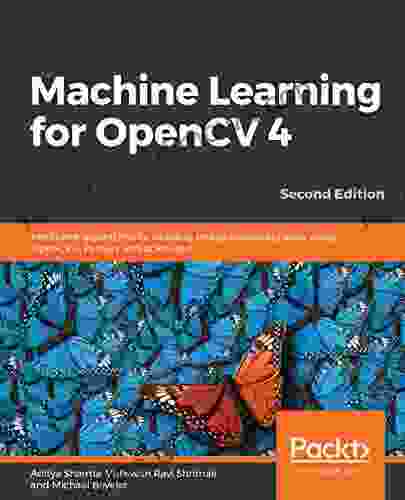Unlock the Power of Machine Learning for OpenCV: A Guide to Image Processing and Recognition

In today's data-driven world, machine learning (ML) has become an indispensable tool for businesses and researchers alike. Its ability to automate complex tasks, extract insights from data, and make predictions has revolutionized industries ranging from healthcare to finance. One of the most popular applications of ML is in the field of computer vision, where it is used to analyze and interpret images.
OpenCV (Open Source Computer Vision Library) is a powerful open-source library that provides a comprehensive set of tools for image processing and analysis. By combining ML with OpenCV, you can unlock even more powerful capabilities for your computer vision applications.
This article is a comprehensive guide to machine learning for OpenCV. We will cover the basics of ML, including supervised and unsupervised learning, as well as the different types of ML algorithms that are commonly used for image processing. We will also provide detailed instructions on how to use OpenCV with ML to perform common tasks such as object detection, facial recognition, and image segmentation.
5 out of 5
| Language | : | Spanish |
| File size | : | 3315 KB |
| Text-to-Speech | : | Enabled |
| Screen Reader | : | Supported |
| Enhanced typesetting | : | Enabled |
| Print length | : | 95 pages |
| Lending | : | Enabled |
There are many benefits to using ML with OpenCV, including:
- Improved accuracy: ML algorithms can be trained to achieve high levels of accuracy on a wide range of image processing tasks.
- Automation: ML can automate many of the tasks that are traditionally performed manually, freeing up your time to focus on other things.
- Customization: ML algorithms can be customized to meet your specific needs. For example, you can train an ML algorithm to detect specific objects in images or to recognize specific faces.
- Scalability: ML algorithms can be scaled to handle large datasets, making them ideal for use in applications that require real-time processing.
To follow this article, you will need the following:
- A basic understanding of programming
- A working knowledge of OpenCV
- A dataset of images
There are two main ways to use ML with OpenCV:
- Using pre-trained models: You can download pre-trained ML models from a variety of sources, including the OpenCV library itself. These models can be used to perform common tasks such as object detection, facial recognition, and image segmentation.
- Training your own models: You can also train your own ML models using OpenCV. This is a more advanced topic, but it gives you the flexibility to create models that are customized to your specific needs.
In this article, we will focus on using pre-trained models. However, we will also provide some resources for training your own models.
To use a pre-trained model with OpenCV, you first need to download the model. You can find pre-trained models for a variety of tasks on the OpenCV website.
Once you have downloaded a model, you can load it into OpenCV using the cv2.load() function. For example, to load the pre-trained model for object detection, you would use the following code:
python model = cv2.load('model.xml')
Once you have loaded a model, you can use it to perform inference on images. To perform inference, you first need to create an input blob from the image. An input blob is a data structure that contains the image data in a format that is compatible with the model.
To create an input blob, you use the cv2.blobFromImage() function. For example, the following code creates an input blob from an image:
python blob = cv2.blobFromImage(image, size=(300, 300),mean=(104.0, 177.0, 123.0),swapRB=True)
Once you have created an input blob, you can set it as the input to the model. To set the input blob, you use the cv2.setInput() function. For example, the following code sets the input blob for the object detection model:
python model.setInput(blob)
Once you have set the input blob, you can run the model. To run the model, you use the cv2.forward() function. For example, the following code runs the object detection model:
python model.forward()
The output of the model is a list of detections. Each detection contains the bounding box of the detected object, as well as the confidence score.
To draw the detections on the image, you can use the cv2.rectangle() function. For example, the following code draws the detections on the image:
python for detection in detections: (x1, y1, x2, y2) = detection[2:6] cv2.rectangle(image, (x1, y1),(x2, y2),(0, 255, 0),1)
Machine learning is a powerful tool that can be used to automate a wide range of tasks in computer vision. By combining ML with OpenCV, you can unlock even more powerful capabilities for your image processing applications. In this article, we have provided a comprehensive guide to machine learning for OpenCV. We have covered the basics of ML, as well as the different types of ML algorithms that are commonly used for image processing. We have also provided detailed instructions on how to use OpenCV with ML to perform common tasks such as object detection, facial recognition, and image segmentation. We encourage you to experiment with ML and OpenCV to see how you can use them to improve your image processing applications.</body></html>5 out of 5
| Language | : | Spanish |
| File size | : | 3315 KB |
| Text-to-Speech | : | Enabled |
| Screen Reader | : | Supported |
| Enhanced typesetting | : | Enabled |
| Print length | : | 95 pages |
| Lending | : | Enabled |
Do you want to contribute by writing guest posts on this blog?
Please contact us and send us a resume of previous articles that you have written.
 Book
Book Novel
Novel Page
Page Chapter
Chapter Text
Text Story
Story Genre
Genre Reader
Reader Library
Library Paperback
Paperback E-book
E-book Magazine
Magazine Newspaper
Newspaper Paragraph
Paragraph Sentence
Sentence Bookmark
Bookmark Shelf
Shelf Glossary
Glossary Bibliography
Bibliography Foreword
Foreword Preface
Preface Synopsis
Synopsis Annotation
Annotation Footnote
Footnote Manuscript
Manuscript Scroll
Scroll Codex
Codex Tome
Tome Bestseller
Bestseller Classics
Classics Library card
Library card Narrative
Narrative Biography
Biography Autobiography
Autobiography Memoir
Memoir Reference
Reference Encyclopedia
Encyclopedia John E Littlewood
John E Littlewood Johannes Fried
Johannes Fried Sherry Soule
Sherry Soule John Collis
John Collis Saul Stahl
Saul Stahl Thomas Barthel
Thomas Barthel John Barsness
John Barsness Johann Rafelski
Johann Rafelski William Berman
William Berman John J Macaloon
John J Macaloon Vicki Mayk
Vicki Mayk Mehran Kardar
Mehran Kardar Joey Percia
Joey Percia Philip Dalling
Philip Dalling John Fedynsky
John Fedynsky Patricia A Mckillip
Patricia A Mckillip Jodi Meadows
Jodi Meadows Sherryl Vint
Sherryl Vint Stephen Morrill
Stephen Morrill Maurine F Dahlberg
Maurine F Dahlberg
Light bulbAdvertise smarter! Our strategic ad space ensures maximum exposure. Reserve your spot today!
 Isaac AsimovFollow ·8.6k
Isaac AsimovFollow ·8.6k Jacob HayesFollow ·9k
Jacob HayesFollow ·9k Craig CarterFollow ·10.4k
Craig CarterFollow ·10.4k Gilbert CoxFollow ·6k
Gilbert CoxFollow ·6k John Dos PassosFollow ·9.2k
John Dos PassosFollow ·9.2k Beau CarterFollow ·12.9k
Beau CarterFollow ·12.9k Thomas PowellFollow ·9k
Thomas PowellFollow ·9k Jack ButlerFollow ·14.1k
Jack ButlerFollow ·14.1k

 Joshua Reed
Joshua ReedTake Your Marketing Business Into The Next Level
Are you ready to...

 Aaron Brooks
Aaron BrooksFrom Fourier to Cauchy-Riemann: Geometry Cornerstones
From Fourier to Cauchy-Riemann: Geometry...

 Orson Scott Card
Orson Scott CardUnveiling the Art of Mitigation Banking: A Comprehensive...
In the intricate dance between...

 Victor Hugo
Victor HugoUnleash Your Creativity: A Journey Through the Enchanting...
Prepare to be captivated as we...

 Duncan Cox
Duncan CoxLoad of Bull: An Englishman's Adventures in Madrid
By Simon Bunce ...
5 out of 5
| Language | : | Spanish |
| File size | : | 3315 KB |
| Text-to-Speech | : | Enabled |
| Screen Reader | : | Supported |
| Enhanced typesetting | : | Enabled |
| Print length | : | 95 pages |
| Lending | : | Enabled |














